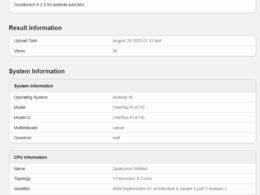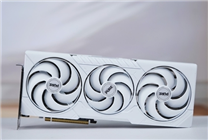DRAM Prices on the Rise: An Ongoing Supply Contraction
Summary:
- DRAM memory prices have consistently increased for four consecutive months, driven by production cuts and market expectations.
- Major manufacturers are shifting focus to next-generation products, impacting supply chains and escalating prices across different DRAM types.
- The current market trend indicates a sustained supply-demand imbalance, leading to further price hikes.
In recent reports, it’s been indicated that DRAM memory prices have surged for four continuous months. This increase is largely attributed to shifting market expectations and strategic production adjustments by major manufacturers. As demand for memory continues to grow, many DRAM producers are suspending or reducing output, which exacerbates the existing supply issues.
In July 2025, the bulk transaction prices for the widely used DDR4 8Gb memory modules averaged around $4.28 each, reflecting a 4% increase from the previous month. Similarly, the smaller 4Gb versions saw prices rise to approximately $3.26 each, marking another month of upward momentum in pricing. Such trends highlight the crucial influence of memory manufacturers and monthly or quarterly negotiations that influence wholesale prices.
Several prominent DRAM manufacturers have already begun recalibrating their production lines. South Korean giants such as Samsung Electronics and SK Hynix are increasingly directing their resources towards next-generation DDR5 technology, as well as high-bandwidth memory (HBM) options tailored for artificial intelligence applications. The shift away from DDR4 signifies a strategic pivot designed to meet emerging market demands, but it also represents a contraction in the already tense supply landscape.
Chinese manufacturer Changxin Storage is following suit, announcing plans to gradually transition production away from DDR4 to DDR5, effectively ceasing its DDR4 output. Consequently, only a handful of companies—such as Taiwan’s Nanya Technology—are positioned to sustain DDR4 supply in the face of dwindling production.
The ripple effect of this transition extends beyond DDR4. In July, the wholesale prices for the newer DDR5 modules experienced modest increases ranging from 1-2% compared to previous months. Furthermore, this pattern of price escalation appears to be permeating into the older DDR3 system memory, signaling a broader market trend.
The current supply-demand imbalance underscores the complexities of the memory market, where various factors including technological advancements and strategic production decisions by manufacturers influence pricing structures. As the industry adapts to new technologies, potential buyers and stakeholders must remain vigilant about the implications of these changes for future memory acquisition and management.
This ongoing situation highlights the significance of production capacity, technological advancements, and market dynamics in dictating memory prices. Understanding these elements can aid businesses and consumers in making informed decisions regarding and their approaches to memory needs in a fluctuating market.
As manufacturers pivot to newer technologies, the implications for supply chain management and pricing strategies are profound. Observing these transitions can offer insights into how the landscape of memory technology will evolve in the coming months and years, making it imperative for stakeholders to stay informed and prepared for potential disruptions and opportunities.
In conclusion, the upward trend in DRAM prices, influenced by reduced production capabilities and a strong market pivot towards next-generation products, is expected to persist. Buyers and industry players must adapt to these changes to navigate the increasingly competitive landscape effectively.






